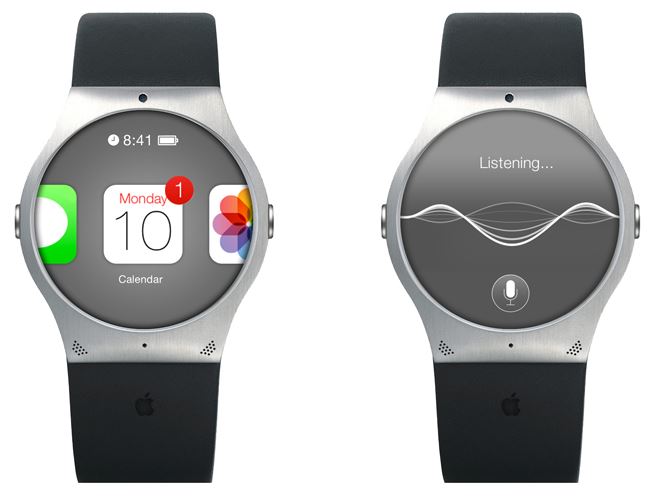-

-

-

-

-

-

-

-

-

-

-
-

-

-

-

-

-

-

-

-

-

-

-

-

-

-

-

-

-

-

-

-

-

-

-

-

-

-

-

-

-

-
-

-

-
 TOTW: Google's Project Ara Modular Phone May Be The Future Of SmartphonesOctober 30, 2014
TOTW: Google's Project Ara Modular Phone May Be The Future Of SmartphonesOctober 30, 2014 -

-

-

-

-

-

-

-

-

-

-

-

-

-

-
-
-

-

-

-

-

-

-

-

-

FastNews
Why Other Companies Should Follow Alphabet’s Lead
09 years
For as long as it has existed, the public has identified the Google brand with the ridiculously popular search engine under the same name. Since 1998, Google search has grown exponentially while staying pretty much the same, yet the company Google has expanded aggressively into fields well beyond search, both through acquisitions such as YouTube and Nest, and organically via the company’s extensive R&D initiatives such as Google Glass and the company’s autonomous car. Still, this has all fallen under the good old multi-billion dollar umbrella of Google. That all changed last week. Not that initiatives inside Google have fundamentally changed; the profit driver continues to be search and advertising, with many long-term prospects hoping to flower eventually. Nevertheless, the restructuring of management lines arguably has dramatic long-term implications, in my opinion for the better.
In a nutshell, Google essentially created a holding company called Alphabet that owns Google and many smaller companies that Google has acquired/created, such as Nest and Calico (Google’s longevity initiative). Alphabet is now a portfolio of enterprises managed by founders Larry Page and Sergey Brin, many with distinct CEOs who have a fair amount of independence. This shift came as a shock to everyone outside of Google (and likely many inside the company), sounding more like one of the company’s classic April Fool’s jokes than a typical corporate maneuver. Renaming a company with one of the top business brands in the world? Insane in many respects, not to mention handing the CEO of “Google Classic” to another executive, Sundar Pichai.
So why is this a good idea, and why should other companies consider following Google’s lead? It really comes down to what they are trying to accomplish as a company. In the announcement letter that you can read at abc.xyz, they wrote the following, which helps explain their reasoning behind the change:
“As Sergey and I wrote in the original founders letter 11 years ago, ‘Google is not a conventional company. We do not intend to become one.’
Alphabet’s initiatives are far-flung and have the potential much more than Google’s traditional “cash cow” businesses to change the world. It’s hard not to see some of Alphabet’s initiatives becoming wildly successful and ultimately spinning out into independent, and large, public companies. For instance, I previously mentioned Calico as one of the companies Alphabet is keeping under it’s wing. Calico is a scientific research and technology company; their ambitious goal is to research and eventually create ways to elongate life and let people live healthier. That is a goal, although ambitious, if reached with the help of Alphabet could very well change the world in a major way.
What really excites me about Alphabet is that they’re doing precisely what I would do with all that money and resources: create and finance projects that will change the future. Google the search engine has become a very conventional business in the Internet age, but Google the company aspires to much more that just rolling in the cash and adding its existing product lines (I hate to say it, but I’m looking at you, Apple). In an age of tech titans, companies such as Google, Facebook, Amazon, Apple, and Microsoft are all angling to stake their claim to the future. And under Alphabet, Google aims to establish a leading innovation platform by “letting many flowers bloom.” Rather than sticking to a couple odd ventures and mainly staying a conventional company, Alphabet lets Google expand into a business set on creating a better future. And if this change in corporate structure will help facilitate that, then I say go for it.
If you want to read the original Alphabet announcement letter, click HERE.
New Canon Camera Has An ISO Of Over 4 Million!
09 years
Capturing moments of our lives has always been an important element of human culture. Before modern technologies existed, people told stories, then later learned to write those stories down. When cameras were invented, people suddenly had the opportunity to take snapshots of their life, whether spontaneous or artistic, that they could later admire. Nowadays, our phones enable us to easily combine still photos with video, yet there has always been one constraint to sharing and capturing that only storytelling isn’t affected by: the time on day, i.e., how much light there is at the time of day. Photos can have perfect composition but be ruined by bad lighting. On the other hand, lighting can be artistically manipulated to create different effects that can actually enhance the look (e.g., with filters or digital adjustments).
In photography, there is a technical measure of how much light you are letting into your camera aperture. Or in other words, the amount of sensitivity to bright or dim light the camera is set to when taking a picture. This measure is called the ISO, pronounced “i-sow”, and it is something that even film for early cameras had the ability to adjust. You could buy ISO 100 film for sunny photos, ISO 200 films for cloudy photos, and ISO 400 film for indoor shots. The higher the ISO, the more sensitive the camera is to lower brightness light. The same rules apply to video. Although older cameras only went up to an ISO of 400, nowadays more expensive cameras go into the thousands. Just recently, Canon released a camera that has the potential to rock the photography/videography world; not for it’s quality of photos and videos, although that is excellent too, but for it’s ISO, able to be set all the way to 4 million.
The video below is about the CMOS sensor, which has been upgraded slightly over the past two years, but you can still see the incredible video quality.
You may be wondering what that even means. If an ISO of 400 is good for taking photos inside, and ISOs into the thousands are good for even darker lighting, what does and ISO of 4 million, that’s 10,000 times more sensitive that what’s needed for inside lighting, does? Well, it turns out that setting your camera to an ISO of 4 million allows you to literally shoot in the dark, effectively giving your camera night vision. Not infrared night vision where the picture looks like a color inverted iPhone, but real night vision, meaning you can film during the night and the video or image will look exactly the same as if you were shooting the day.
This technology was invented by Canon back in 2013 with their CMOS sensor, which just got integrated into Canon’s new camera, the Canon ME20F-SH. The camera is essentially just a cube with a lens, being surprisingly small, only around 4 inches across. It weighs two pounds, which is fairly heavy for a camera, but still allows the device to be used in a wide variety of situations and doesn’t inhibit its portability. Even though bringing the ISO up on regular cameras makes the video quality worse, the ME20F-SH still shoots at HD quality, allowing serious film-makers to use this camera for professional films.
Specs aside, this camera opens up a whole new world of possibilities for film-makers. From cave explorers to experimental directors, this camera can be used for an incredible variety of ways simply for that fact that it can see in the dark. Now, the camera isn’t for amateur photographers or directors who simply want to get a clear night sky shot, as after all, the expected price of the camera is $30,000. But, for people who do have the ideas and also have the money, this camera may totally change the way they film. For the first time in the history of capture-based art and storytelling, light isn’t an obstacle.
Janicki Omniprocessor Turns Waste Into Water And Energy
010 years
After making his fair share of cash from starting one of the world biggest technology companies, Bill Gates has moved on to something more: saving the world. No, not in the cliche cape-and-spandex type of way, but more of a billionaire philanthropist type of way. He has already given billions and billions to charity, donating an astounding total of 95% of his life’s earnings and fortune to good causes. The Bill and Melinda Gates Foundation is “Dedicated to improving the quality of life for individuals around the world. From the education of students in Chicago, to the health of a young mother in Nigeria, we are catalysts of human promise everywhere.” as it says on their website. There are so many things that Gates’ fortune along with a whole lot of goodwill can do and already has done, but the reason I’m writing this is because of Bill Gates’ most recent endeavor: turning poo into water.
No, I’m not kidding. Teaming up with a couple of pretty brilliant engineers, one of them being the Janicki Bioenergy CEO, Peter Janicki, Gates has tested the Janicki Omniprocessor, a machine that takes waste and sewer sludge, as Gates calls it, and out of that makes energy, water, and pathogen-free ash. Again, not kidding. Their goal, of course, is to create a machine that, when used in growing and third-world countries, is not only profitable to the entrepreneur that owns the machine, but also that can help the community. In the end, the person running the unit will get paid for not only the water and electricity, but also the ash and sewer sludge. This very well may be a big step up in global higher standards of living, bringing electricity and clean water to developing countries, as currently, it’s pretty hard to lift a country or area out of poverty and poorer standards of living.
This is how the machine works. A conveyor belt brings the sludge into the machine (which the entrepreneur is getting paid for) and dumps it into a large high temp tube, which boils the sludge. The tube is so hot (1,832 Fahrenheit), in fact, that the sludge burning doesn’t even smell, unlike pretty much every other alternative for disposing of that kind of waste. This process removes all the water vapor from the sludge, and the vapor then gets shoved through a high-quality filtration system, which then creates high-quality water. If you don’t fancy drinking something that was poop only a few minutes ago, just watch Bill Gates do it in the video above and maybe you’ll change your view.
Once the sludge is now completely water free, it gets thrown into a large furnace, that heats it up to so much that really hot steam rises out of it, going straight into a custom steam engine, which drives a generator, creating: you guessed it, electricity. This electricity gets put back into the system to help power it, but it also can be sent out into the community, for the benefit of everyone. The entrepreneur again gets compensated for the output, adding one more source of income for the hard-working Janicki Omniprocessor manager. And finally, the entrepreneur gets paid for the ash too, because hey, why not. (Actually, they just haven’t said why they compensate for the ash, maybe just to add a little more incentive, but they did make it clear that they do pay for the ash)
The Janicki Omniprocessor isn’t yet ready to be used in developing countries, and there are sure to be some kinks to work out, but they are preparing for a field test in Senegal to see how well the community interacts and works with the machine. But in general, the machine is a remarkable piece of engineering, and certainly has a great potential to help the sanitation of the rising populations in growing nations all over the world.
FastNews: Turn Down For 2014 – A Complete Yearly Youtube Review
010 years
That’s right, Youtube Rewind 2014 is here. Every year, for the past two years, the Youtube team has called all the major viral and popular Youtube creators together to create a crazy, amazing, random, but overall very entertaining mashup of all the popular trends. Last year, the topic was What Does The Fox Say; the year before that, Gangnam Style. This year: Turn Down For What.
Ok, ok, if you actually watched the video (and if not, watch above) you know that unlike 2013 and 2012, the “Turn Down For 2014” title didn’t totally fit with the video itself. In 2013 and 2012, Gangnam Style and What Does The Fox Say were the talk of the town, going mega-viral. They deserved to be the title and subject of the yearly summary. The problem is, 2014 didn’t have a standout trend. Sure, you could say “Happy”, by Pharrel, or Frozen, or “All About That Bass”, by Meghan Trainor, and of course all of those were featured in some way, but if you think about it none of those trends were nearly as popular as Gangnam and the Fox, for not nearly as long. Even Flappy Bird had it’s 7 seconds of fame in the video. So even though Turn Down For 2014 doesn’t nearly accurately represent the trends for the past year through the whole video pretty much every giant trend to small viral channel is featured.
Despite the fact that there isn’t a clear topic for the video, that doesn’t mean that the video won’t be filled with the best Youtubers there are. For instance, PewDiePie, the most subscribed Youtuber to date, opens the video, and is followed by the likes of HolaSoyGerman (20m subs), Smosh (19m subs), Jenna Marbles (14m subs), ERB (11m subs), TheFineBros (10m subs), skydoesminecraft (10m subs), Freddie Wong (7m subs), Michelle Phan (7m subs), Pentatonix (7m subs), Prank VS Prank (6.5m subs), and many, many, more. For the full list, click HERE and open the description.
Overall, the video is great, nicely weaving together pretty much all of the trends and viral videos from the past year. It’s nice to see Youtube (technically, Google) creating a video at the standards of filming, editing and animation that the best creators of Youtube itself have been setting. The video even gives people like me who follow Youtube, and know many of the stars in the video, a sense of nostalgia and wonder for what the next year in Youtube will bring.
FastNews: Russian Blogger Law Destroys Anonymity For Russia Bloggers
0In our new age of instant
communication and more of an equal chance of fame on platforms such as YouTube and WordPress, there are many, many, many ways to express what feel and believe in. Writing has always been an outlet for emotions and creativity, but never before has it been so readily available to the public. An average person (like me) can put their writing and their thoughts on the internet, and everyone can see it. Not just a select group of people who happen to look at your writing at, say, a library, if you have even gotten your writing into a library yet.
Although there are many people out there saying the internet is in chains for this reason and that, on the big picture, every person has much more exposure to what they create than ever before. Of course, here in America we have it pretty good in terms of freedom of speech and other laws surrounding that topic. I could potentially say “Obama is terrible!”, or “Romney is terrible!” or whatever political opinion I have, but in other places it’s not the case. Specifically, I am talking about Russia.
Because of a new law signed into law 3 days ago, reasonably called the “blogger law”, any blogger that attracts more than 3,000 unique visitors a day would now be considered a journalist, meaning they will have to register with the government, basically giving up the one thing that Russian bloggers hold so dearly: anonymity. Because many small bloggers use their websites to say bad things about the current government, this is a big blow to anti-kremlin efforts.
Also, the content of every registered site will have to be run by the government, to prevent them from publishing slander, profanity and hate speech. The writers will be made to verify their facts before publishing.
Everything about this law is obviously targeting anti-Putin sites. Roskomnadzor, a Russian political spokesperson for this law even said that not every sites that have over 3,000 unique hits a day will have to get registered. Only the ones that the government asks to. Sounds a bit fishy.
If these rules are broken, or a website does not obey, the fines can be up to $14,000. The alternative is the government blocks your site, something no site wants. Grani.ru, a site that was blocked, has already lost half it’s audience.
Unfortunately, all this points to a future of more restrictions and government control for Russia. The internet was made to be a free place, open to any writing from any person. Vladimir Korsunsky, a editor for Grani.ru, said very truthfully, “You have to be courageous to say, ‘No, I don’t agree with this.”
FastNews: Surface Mini Confirmed
010 years
Many companies such as Apple and Google live for drama and surprise. Both have annual conferences, the WWDC for Apple and the I/O for Google, and they both hold the element of surprise highly. Before the grand opening, little is known of what will be on display during the talks. For Apple is year, they released Swift, a new programming language. There wasn’t one person who thought that Apple would definitely release a whole new program, overtaking their old Objectve-C.

The Surface Pro 3
So, after how Apple and Google create so much hype over their companies because of this secrecy, you would think other companies would pick up on the tactic. Well, some have, but certainly not Microsoft. Last month, Microsoft unveiled their new tablet, the Surface Pro 3. Now, there were some rumors that Microsoft would also unveil a Surface Mini, a Surface competitor to Apple’s successful iPad Mini. Come on Microsoft, at least come up with a creative name. Anyway, they didn’t release it, and there were even reports that they were, but they changed their mind 2 days before the conference.
So, big deal, right? We might have been wrong about the whole thing. No Surface Mini after all. Well, not really. In the Surface Pro 3 user manual, some, let’s say, hints were given away. Take this section on the new Surface Pen: “You’ll pair your new pen with Surface Mini a little later during setup.” Ohhhh, someone is getting fired.
There are even more of these gems throughout the manual. In many places, there are very obvious references to a “Surface Mini”. Wether Microsoft actually comes through on their hints, and does release a Surface Mini later on in the year is unknown, or if they will abandon the product to escape the media ridicule. Still, lesson learned, eh, Microsoft?

FastNews: Flappy Bird Recreated Using Swift In a Day
010 years
It was bound to happen. After Apple’s release of Swift, their new programming language, the whole developer world was turned on it’s side. Along with the release, a book on how to learn Swift was put in iBooks, and it’s no doubt that all the Apple developers are scrambling to learn it. After all, the language was made to be Objective-C, Apple’s now old language for making iOS and OS X apps, without the C, which slows the coding down. This could really speed up the coding process, and make the developer’s lives easier.
So, as a test, the Github user fullstackio made their own Swift version of a already simple game. You guessed it, Flappy Bird. Obviously, since this code is new and the developer behind FlappySwift barely had time to learn it, the bounding of the bird is a bit rigged, but I’m sure with more experience and expertise, it will be polished off. FlappySwift is just one example of what can be made with Swift, and gues what. It was made in a day. After all, the WWDC was yesterday morning. This just proves the speed of Swift, but next time, to all you developers out there, make something useful.
WWDC 2014 Keynote Speech Live Blog
010 years
Apple’s WWDC 2014 keynote speech is the best, most informative part of the whole WWDC event. Most, if not all of the groundbreaking and surprising features will be released during the 2 hour long talk. If you want to watch the talk live go HERE, but if you can’t feel free to stay here, where I’ll be describing the talk with words and pictures for you.
Apple’s WWDC 2014 – What To Expect
010 years
Every year, the tech world explodes with a gigantic amount of rumors and speculations and concepts of what might come out of this years WWDC. Apple’s big developer conference always brings something surprising and amazing to the table, despite all the attention it’s getting. Last year, iOS 7 was announced, the biggest change to iOS ever. That one change boosted along the flat design movement, and the expectations are high for what will happen this year. Of course, another complete redesign probably won’t happen, as it’s to soon to throw another curveball that the industry, so what changes they actually did do to warrant the title of iOS 8 is still a mystery.
Now, before I start, I want to warn you of something. Don’t kill the messenger, but there is a tiny, tiny amount of information about any of Apple’s software updates, which will reportedly feature in this year’s WWDC. Apple is known for their incredibly strict ruling about these kinds of things, so correct leaks are very rare. But, there is a general idea of what will come out, so I make what I can with what’s out there.
iOS 8
For instance, something that we are sure that will come out is iOS 8. Pictures of a big “8” banner, with a watery background, were taken at the site of the conference in the Moscone Center in San Francisco, California. As I said earlier, it’s way to early to redesign the system again, so the changes made will most likely by new features and improved specs.
Speaking of new features, a pretty solid rumor has been going around about Apple’s delve into the health and fitness market, Healthbook. In a article by 9to5Mac, Healthbook was reported to have many functional abilities, such as heart rate, nutrition, blood sugar level and steps taken monitors. Because the iPhone M7 chip isn’t really capable of collecting all that information, (though a new chip they introduce theoretically could) it is assumed that Healthbook will be a hub for many other third-party applications and products.
Besides that, there are some other smaller rumored features, such as iTunes Radio getting it’s own app, a Siri upgrade, a music recognition app in partnership with Shazam and a hinted at new mobile payment system. Other than the rumors that I’ve mentioned so far, Apple has kept it’s release pretty watertight. There are so many possibilities in this release, new features that could be added, it’s just the way Apple wanted it. A surprise to blow your brains out.
OS X 10.10
Along with iOS 8, we know that OS X 10.10 will also be released, in the same way we know iOS 8: a big “X” banner. Though unlike iOS 8, where the water backround doesn’t matter, OS X banners tend to relate to the name of the system. This year, the backround was of El Capitan, a gigantic rock formation in Yosemite, indicating OS X Yosemite or OS X El Cap.
Because of the last WWDC’s iOS overhaul, it’s expected that this year the OS X UI and design will get the attention. Most likely, the still slightly textured and skeumorphic OS X will look more like the flat iOS 7. Also, some of Apple’s own music and photo apps might get a redesign to match the overall flat design, but there is incredibly little known about OS X 10.10.
iWatch
I’m sorry to burst your bubble, Apple fans, but it’s looking like the hotly anticipated iWatch will not be released this WWDC. First of all, the WWDC is historically used for software, not hardware updates. Also, sources familiar with Apple’s general plans were reported to say that they will most likely not release the iWatch, just adding on to the already pessimistic attitude surrounding the release of the iWatch.
Even though the whole media industry is probably overdoing this whole thing, nobody can doubt the importance and excitement surrounding this release. After the software is sent out to the millions of developers out there, eager to get their hands on the new features and capabilities. The whole next year in tech may change drastically depending on what comes out of tomorrow’s keynote speech. On a completely separate note, make sure to check back here for the official Fast Forward WWDC 2014 keynote speech live blog at 10:00 to 12:00 AM PT!







